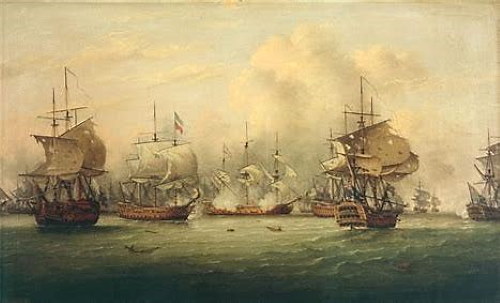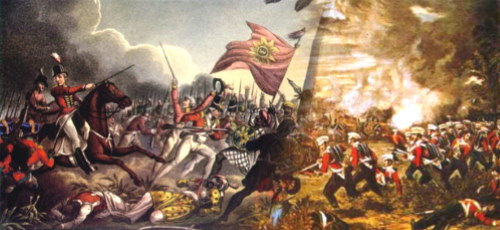The Peninsular War (1807 - 1814)

The Peninsular War was a military conflict fought by Spain and Portugal, assisted by Great Britain, against the invading and occupying forces of France for control of the Iberian Peninsula during the Napoleonic Wars. In Spain, it is considered to overlap with the Spanish War of Independence. The war began when the French and Spanish armies invaded and occupied Portugal in 1807 by transiting through Spain, and it escalated in 1808 after Napoleonic France had occupied Spain, which had been its ally. Napoleon Bonaparte forced the abdications of Ferdinand VII and his father Charles IV and then installed his brother Joseph Bonaparte on the Spanish throne and promulgated the Bayonne Constitution. Most Iberians rejected French rule and fought a bloody war to oust them. The war on the peninsula lasted until the Sixth Coalition defeated Napoleon in 1814, and it is regarded as one of the first wars of national liberation and is significant for the emergence of large-scale guerrilla warfare.
> Click to read details of William Carter.
> Click to read details of Regimental Sergeant Major Richard Gamble.
Anglo-Dutch Java War (1810-1811)
French successes in the Napoleonic Wars left the French Empire at its greatest extent ever in 1810, and due to repeated military failures on the European mainland Britain was forced to look for other fronts on which to engage France and its allies. One such campaign was waged by the British East India Company against French and Dutch possessions in the East Indies. The cornerstone of this campaign was the war in which the Indonesian island of Java was taken, a campaign which began with the landing at and capture of Fort Cornelis. The conquest of the whole island rapidly followed, but it was returned to the Netherlands in the 1816 treaty negotiations that ended the Napoleonic Wars.
> Click to read details of Charles Green.
The Battle of Waterloo (1815)

Battle of Waterloo by William Sadler
Upon Napoleon's return to power in 1815, many states that had opposed him formed the Seventh Coalition and began to mobilise armies. Two large forces under Wellington and von Blücher assembled close to the northeastern border of France. Napoleon chose to attack in the hope of destroying them before they could join in a coordinated invasion of France with other members of the Coalition. The decisive engagement of this three-day Waterloo Campaign (16th-19th June 1815) occurred at the Battle of Waterloo. According to Wellington, the battle was ‘the nearest-run thing you ever saw in your life’.
Napoleon delayed giving battle until noon on 18th June to allow the ground to dry. Wellington's army, positioned across the Brussels road on the Mont-Saint-Jean escarpment, withstood repeated attacks by the French, until, in the evening, the Prussians arrived in force and broke through Napoleon's right flank. At that moment, Wellington's Anglo-allied army counter-attacked and drove the French army in disorder from the field. Pursuing Coalition forces entered France and restored Louis XVIII to the French throne. Napoleon abdicated, surrendered to the British, and was exiled to Saint Helena, where he died in 1821.
The battlefield is in present-day Belgium, about eight miles (12 km) SSE of Brussels, and about a mile (1.6 km) from the town of Waterloo. The site of the battlefield is today dominated by a large monument, the Lion Mound. As this mound used earth from the battlefield itself, the original topography of the part of the battlefield around the mound has not been preserved.
> Click to read details of Regimental Sergeant Major Richard Gamble.
The 3rd Anglo-Maratha War (1817-1818)
The 3rd Anglo-Maratha War was the final and decisive conflict between the British East India Company (EIC) and the Maratha Empire in India. The war left the Company in control of most of India. It began with an invasion of the Maratha territory by British East India Company troops and although the British were outnumbered the Maratha army was decimated. The troops were led by the Governor General Francis Rawdon-Hastings supported by a force under General Thomas Hislop.
> Click to read details of Charles Green.
The 1st Anglo-Afghan War (1839-1842)
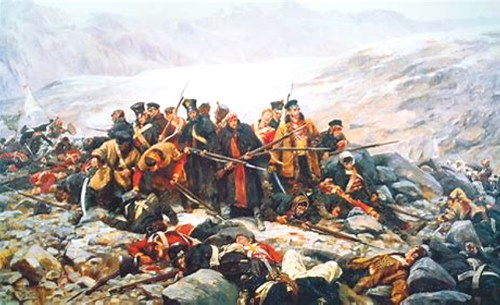
It was one of the major conflicts during the Great Game, the 19th century competition for power and influence in central Asia between Britain and Russia.
> Click to read details of Sergeant 1146 William Simpkin.
The 1st Anglo-Sikh War (1845-1846)
The 1st Anglo-Sikh War (also known as the First Panjab Hind [British] War) was fought between the Sikh Empire and the East India Company in 1845 and 1846 in and around the Ferozepur district of Punjab. It resulted in partial subjugation of the Sikh kingdom and cession of Jammu and Kashmir as a separate princely state under British suzerainty.
> Click to read details of Sergeant 1146 William Simpkin.
The Crimean War (1853-1856)
The Crimean War was a military conflict fought from October 1853 to February 1856 in which Russia lost to an alliance between the Ottoman Empire, the United Kingdom, Sardinia and France. The immediate cause of the war involved the rights of Christian minorities in the Holy Land, then a part of the Ottoman Empire. The French promoted the rights of Roman Catholics, while Russia promoted those of the Eastern Orthodox Church. Longer term causes involved the decline of the Ottoman Empire and the unwillingness of Britain and France to allow Russia to gain territory and power at the Ottoman Empire’s expense. The war stood out for the notoriously incompetent international butchery.
The Battle of the Alma (20th September 1854), which is usually considered the first battle of the Crimean War took place just south of the River Alma in the Crimea. An Anglo-French force under General St. Arnaud and Lord Raglan defeated General Menshikov's Russian army, which lost around 6,000 troops.

Battle of Alma by Horace Vernet 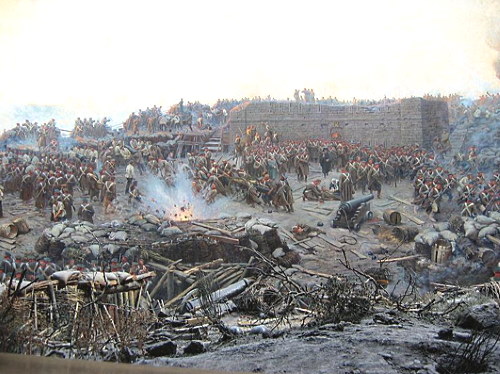
Siege of Sevastopol by Franz Roubaud > Click to read details of Private 3492 John Clave Cripps.
The Indian Mutiny (1857-1858)
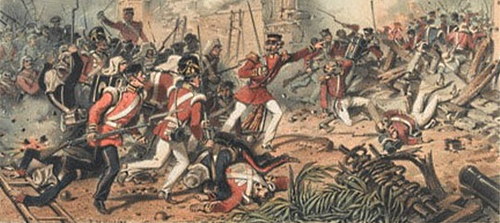
The Indian Mutiny was fed by resentments born of diverse perceptions, including invasive British-style social reforms, harsh land taxes, summary treatment of some rich landowners and princes, as well as scepticism about the improvements brought about by British rule. Many Indians rose against the British; however, many also fought for the British, and the majority remained seemingly compliant to British rule. Violence, which sometimes betrayed exceptional cruelty, was inflicted on both sides, on British officers, and civilians, including women and children, by the rebels, and on the rebels, and their supporters, including sometimes entire villages, by British reprisals; the cities of Delhi and Lucknow were laid waste in the fighting and the British retaliation.
> Click to read details of Private 3492 John Clave Cripps.
> Click to read details of Captain Clifford Henry Mecham. > Click to read details of Ensign Everard Aloysius Lisle Phillipps VC.
The 3rd Anglo-Ashanti War (1873-1874)

General Garnet Wolseley with 2,500 British troops and several thousand West Indian and African troops (including some Fante) was sent against the Ashanti, and subsequently became a household name in Britain. The war was covered by war correspondents, including Henry Morton Stanley and G. A. Henty. Military and medical instructions were printed for the troops. The British government refused appeals to interfere with British armaments manufacturers who sold to both sides.
Wolseley went to the Gold Coast in 1873, and made his plans before the arrival of his troops in January 1874. He fought the Battle of Amoaful on January 31st of that year, and, after five days' fighting, ended with the Battle of Ordahsu. The capital, Kumasi, was abandoned by the Ashanti and was briefly occupied by the British and burned. The British were impressed by the size of the palace and the scope of its contents, including ‘rows of books in many languages’. The Asantahene, the ruler of the Ashanti, signed a harsh British treaty, the Treaty of Fomena in July 1874, to end the war. Among articles of the treaty between Queen Victoria, and Kofi Karikari, King of Ashanti, were that ‘The King of Ashanti promises to pay the sum of 50,000 ounces of approved gold as indemnity for the expenses he has occasioned to Her Majesty the Queen of England by the late war...’ The treaty also stated that ‘There shall be freedom of trade between Ashanti and Her Majesty's forts on the [Gold] Coast, all persons being at liberty to carry their merchandise from the Coast to Kumasi, or from that place to any of Her Majesty's possessions on the Coast’. Furthermore, the treaty stated that ‘The King of Ashanti guarantees that the road from Kumasi to the River Pra shall always be kept open...’. Wolseley completed the campaign in two months, and re-embarked the troops for home before the unhealthy season began. There were 300 British casualties.
The great Chief Amanquatia was among the killed. Admirable skill was shown in the position selected by Amanquatia, and the determination and generalship he displayed in the defence fully bore out his great reputation as an able tactician and gallant soldier’.
> Click to read details of Private William Moore.
The Second Boer War (1899-1902)
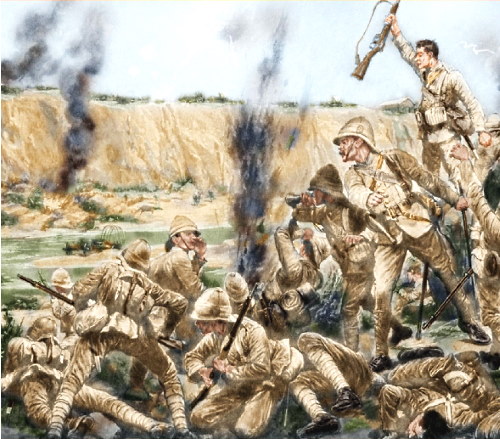
.
> Click to read details of soldiers surnames A-E > Click to read details of soldiers surnames F-Z
|
© Loughborough Carillon Tower and War Memorial Museum
|


